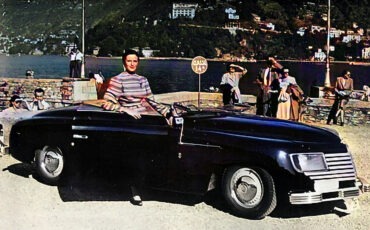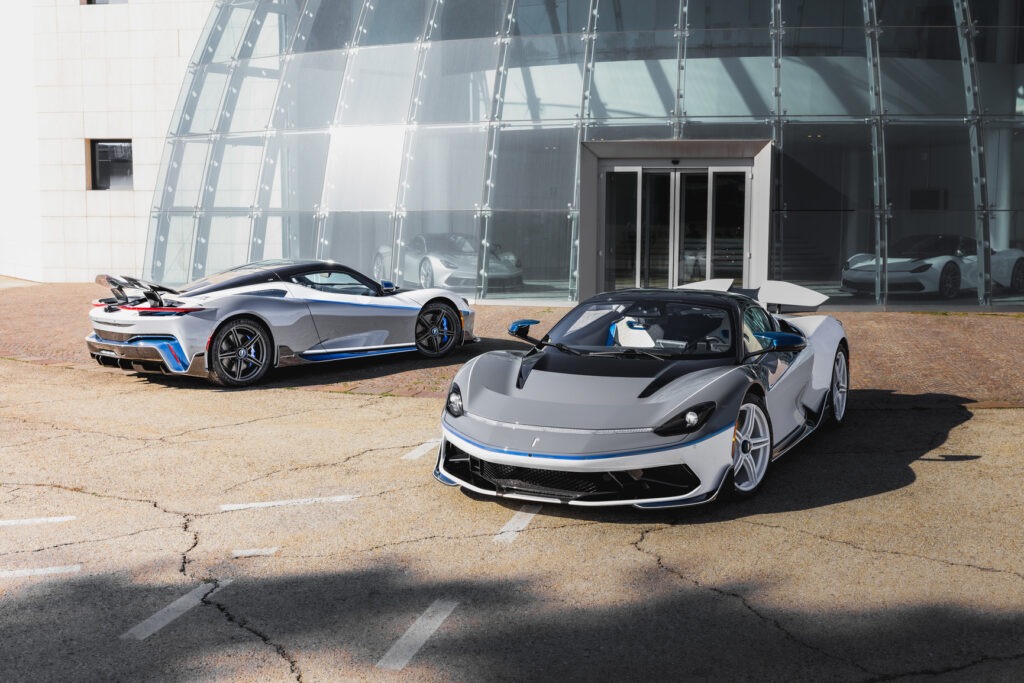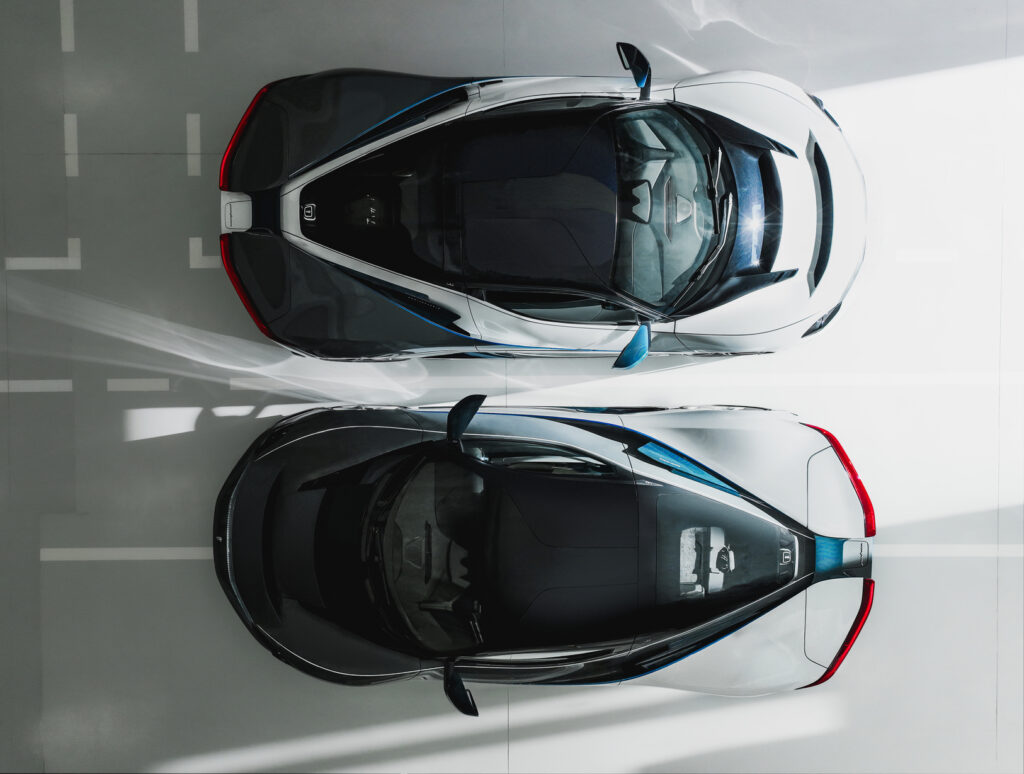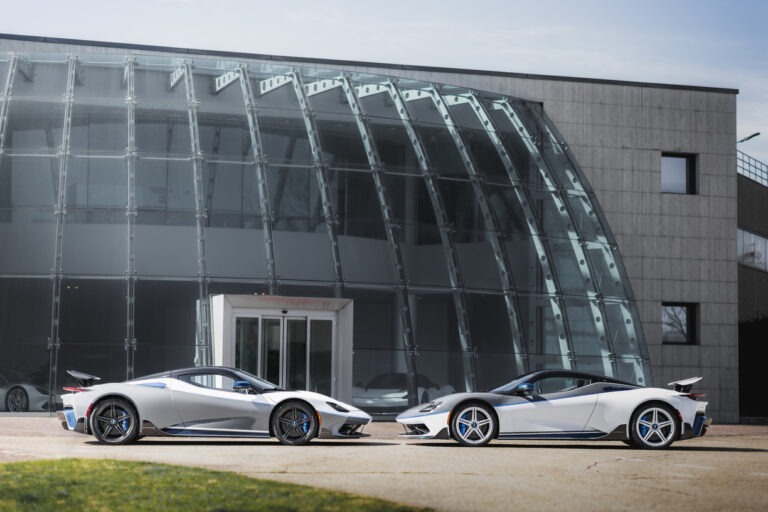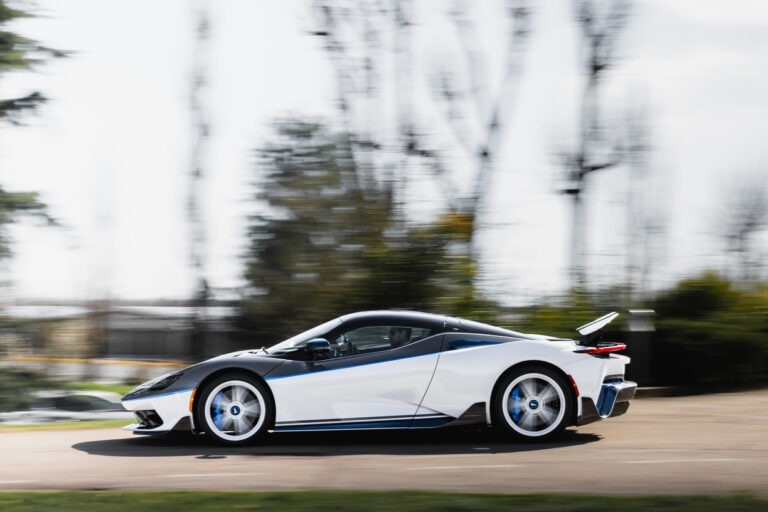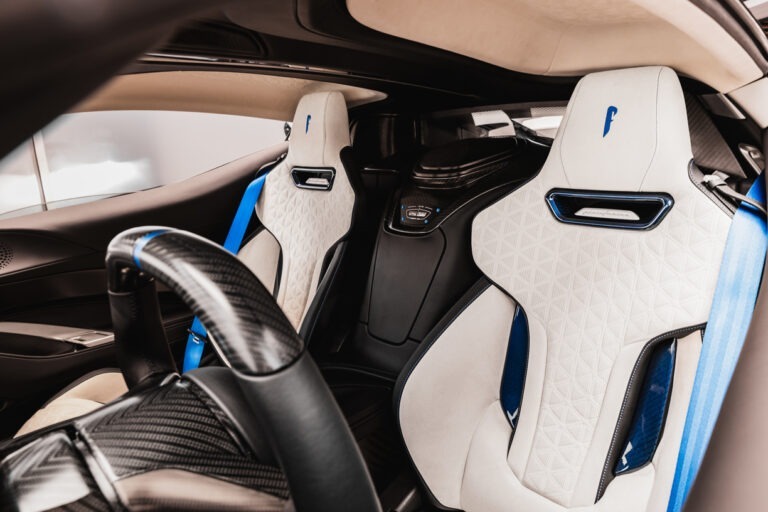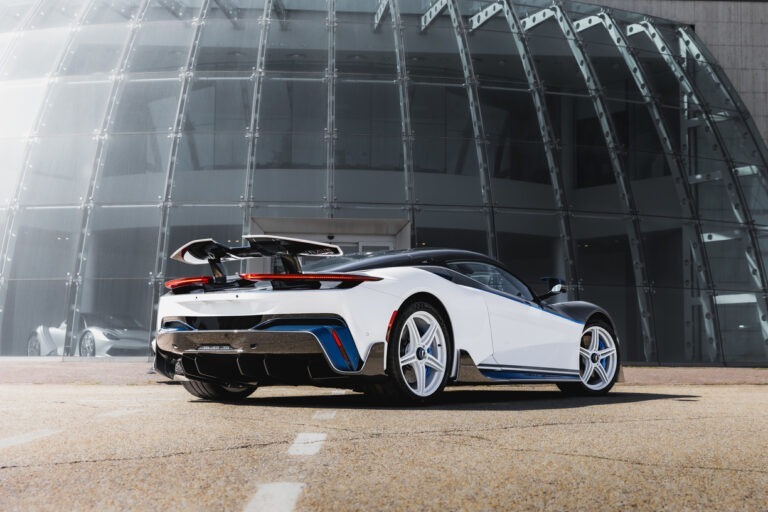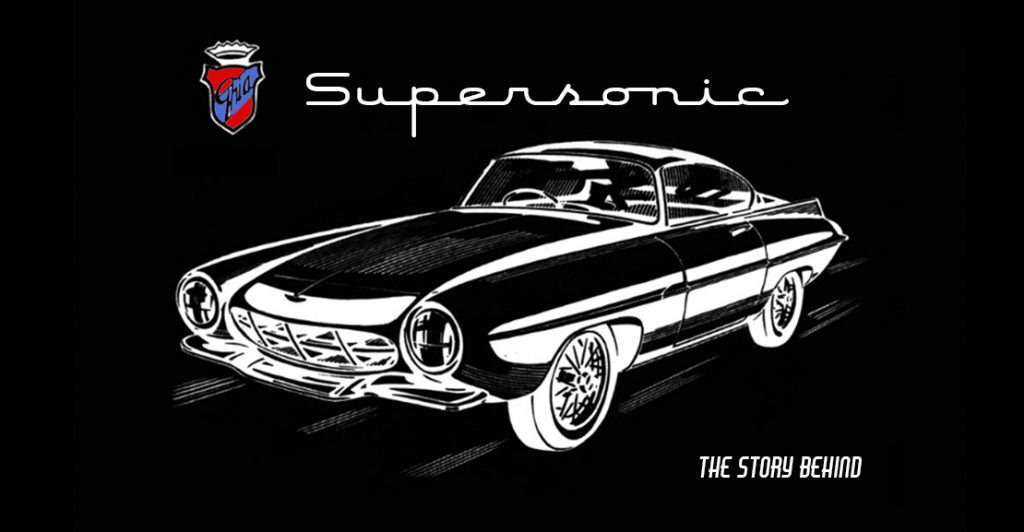
The Supersonic was a small series of bodies built by Ghia on different chassis of various car manufacturers. The origin of the series was a bodywork for a racing car, designed as an individual and built by Giovanni Savonuzzi for Virgilio Conrero. After the car was destroyed in its first race, Ghia decided to use the design and continue to manufacture it as a series of sports cars. From 1953 to 1956, an unknown number of supersonics, probably no more than 20, were created.
The supersonic age began after Chuck Yeager first broke the sound barrier in 1947 with the Bell X-1. In the following years, the design of various daily things were influenced by it. Many designers wanted to reflect the modern feel of fast aircrafts and rockets in their work, as did Giovanni Savonuzzi in designing the sports car for Virgilio Conrero.
Alfa Romeo 1900 Sprint Conrero
Leading up to the 20th Mille Miglia, Swiss gentleman driver Robert Fehlmann approached the turin tuner for Alfa Romeo and Lancia vehicles, Virgilio Conrero, with the desire to build him a special racing sports car for the upcoming race. As a result, Conrero first developed a racing car chassis. For the front suspension he chose parts of the Fiat 1400 and parts of the Lancia Aurelia for the rear suspension.
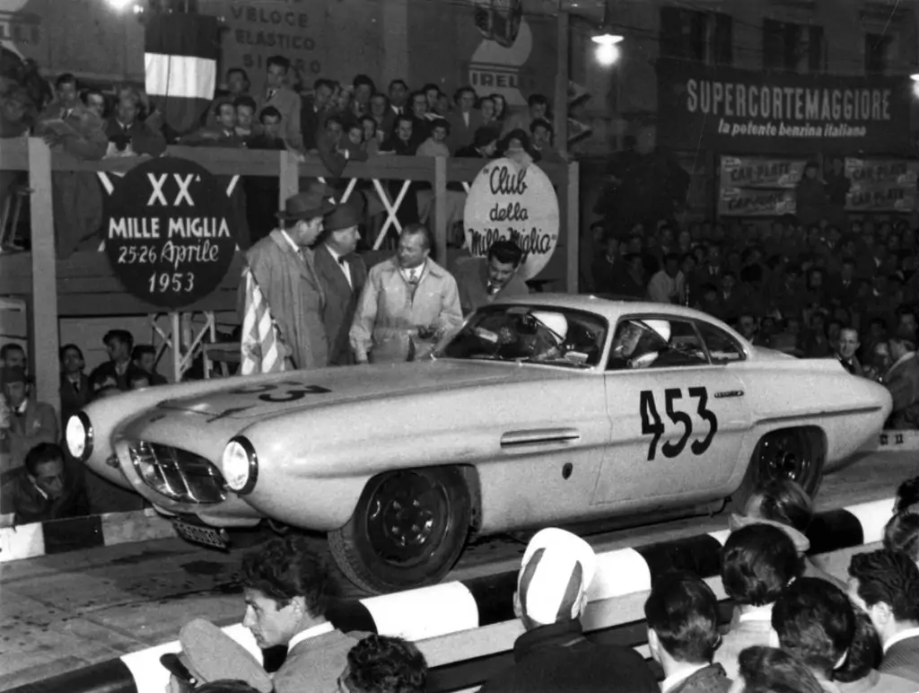
As an engine, he used an Alfa Romeo 1900, which he heavily modified and equipped with four Dell’Orto carburetors. The transaxle power transmission was also taken over by the Lancia Aurelia. For the development of the body, Conrero commissioned his friend Giovanni Savonuzzi. Savonuzzi, known by Cisitalia, had just become head designer for bodies at Ghia. He designed a streamlined body with a long bonnet, squat passenger compartment and short tail. The sideline resembled a fast plane or rocket, tapering at the front and nozzle at the rear. The roof was reminiscent of an airplane cockpit and had a rear window that stretched to the windscreen and gave the impression of a glass dome. The first public presentation took place at the Turin Motor Show in 1953. There, the car was one of the big attractions. The car’s second public appearance was at the Mille Miglia, when it started as number 453. In the race, it crashed and burned out. The body, which was likely partly made of aluminum, was so badly damaged that it could not be saved. Chassis and engine were however further used. Conrero revised the engine and designed a Spider body for the chassis. Now called Conrero Sport or Conrero Alfa Romeo Sport, the race car started again as number 511 while controlled by Fehlmann at the Mille Miglia in 1954. There, it featured a plexiglas dome, which wasn’t used again later.
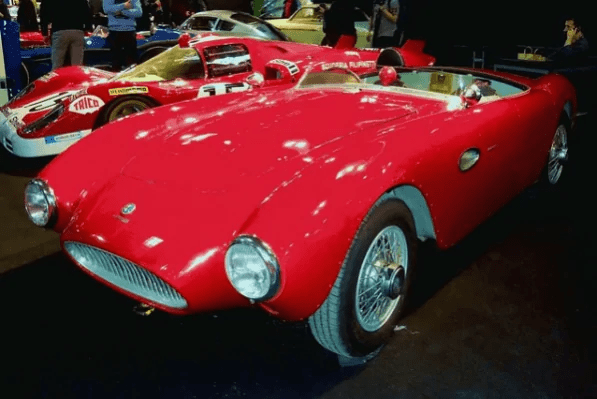
In 2013, the Conrero Sport was displayed at the Salon Rétromobile in Paris.
Fiat 8V Supersonic
After the destruction of the Conrero Alfa Romeo and the strong interest during the presentation in Turin, Ghia’s management decided to revive the design as a small series. The choice of chassis fell on the Fiat 8V, although Ghia had just built another coupe on its base. The shape of the vehicle was changed only slightly, mainly to match the different chassis.
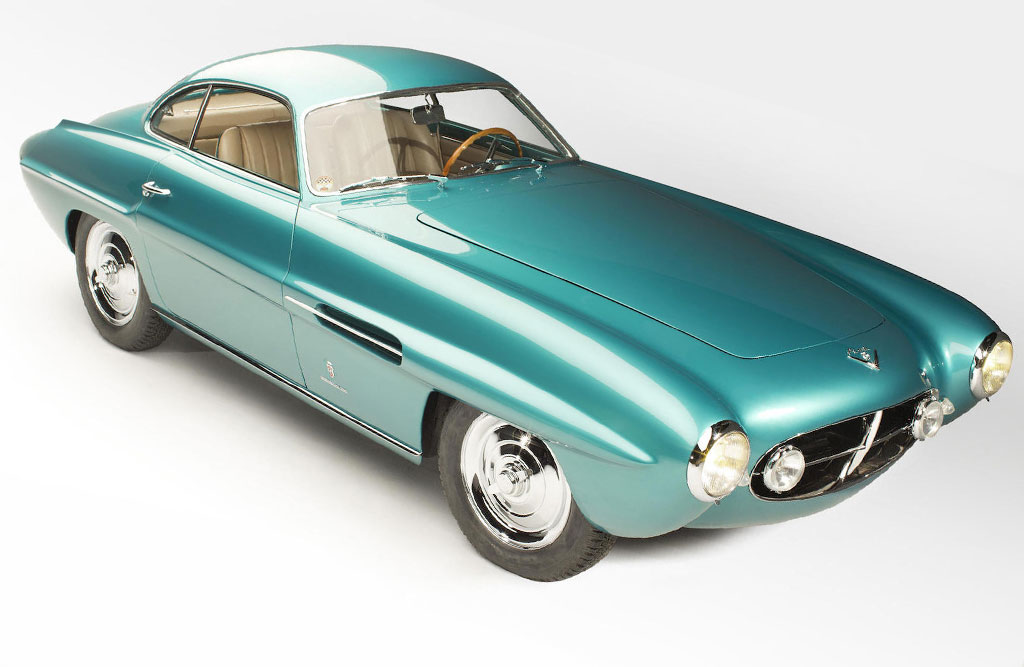
The only big difference was the rear window. It no longer reached the windscreen, but was designed as a normal rear window. Now called Ghia Supersonic, the car was presented at the Paris Motor Show in 1953 and was voted the most beautiful car of the show. Depending on the source, up to 15 Fiat 8V Ghia Supersonics were made. None of these cars is one hundred percent like the other, as during construction, customer requests were taken into account as far as possible.
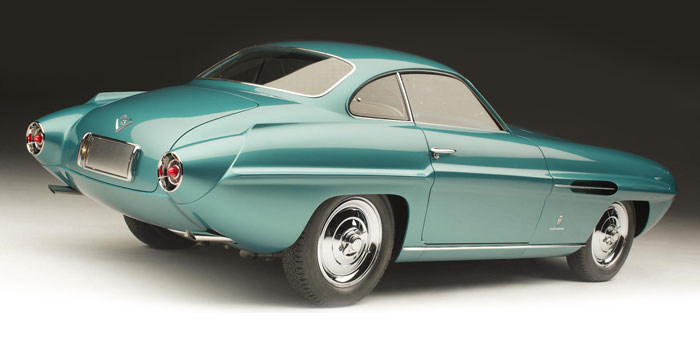
Since it is not known how many Supersonics were built, there’s only an overview of those shown at exhibitions.
Willment 427 Coupe
The only confirmed information about this car is that it was built. The general story is told the same way in different sources, but the details of the stories differ. John Willment, racing team owner and largest British Ford dealer at the time, built a Supersonic body on an AC 427 Cobra chassis in 1965. The body is said to come from a no longer roadworthy Fiat 8V Supersonic. The chassis he acquired from Shelby when they had discontinued the manufacturing of coupe racing cars using Cobra as a base. To be able to put the body on the chassis, the structure had to be heavily modified. According to a sales ad from the 1970s, the resulting super sports car had a Holman & Moody motor featuring about 480 hp and reaching about 200 mph. Since then, the coupe was offered for sale several times.
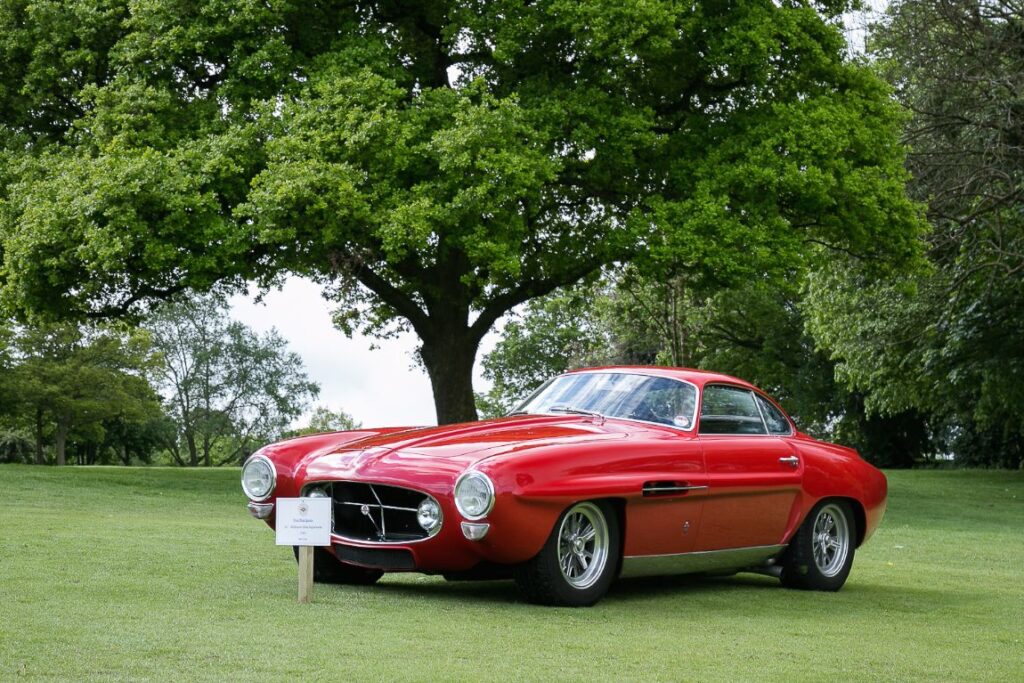
In 2010, the Willment 427 coupe was displayed at The Cartier Style at Luxe at the Goodwood Festival of Speed.
Jaguar XK120 Supersonic
A total of three Jaguar XK120 are said to have been equipped with a Supersonic body. Two of them were rebuilt at Ghia‘s request by a French Jaguar dealer. Both vehicles are left-hand drive vehicles. One of the cars has the chassis number 679768 and was built in 1953 as a coupè at Jaguar. Not only did it get the Supersonic build, but Conrero reworked the engine and built in three Weber twin carburetors.
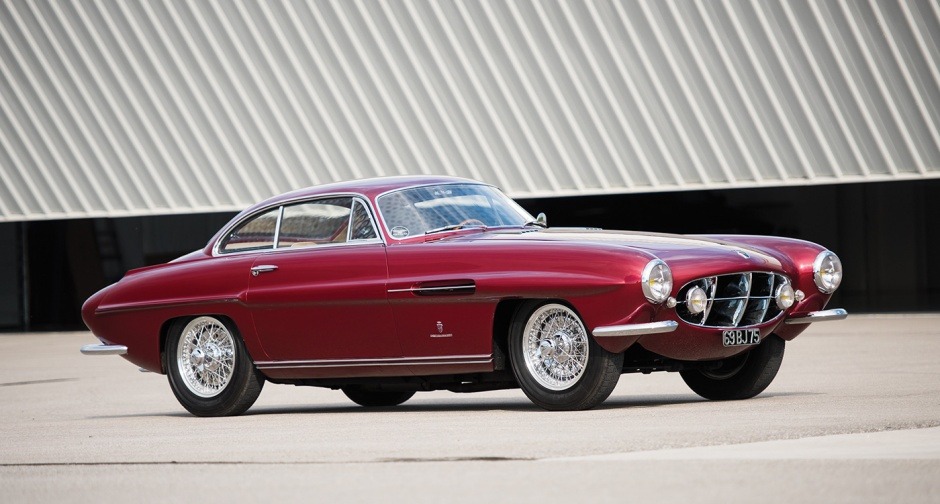
In 1954 the XK, provided with the Ghia body and white at the time, was shown at the Paris Motor Show. The second Jaguar has been significantly modified over the years regarding the grille, hood, fender and exhaust system. It also received two windshield wipers on the rear window. Nothing is known about the third car.
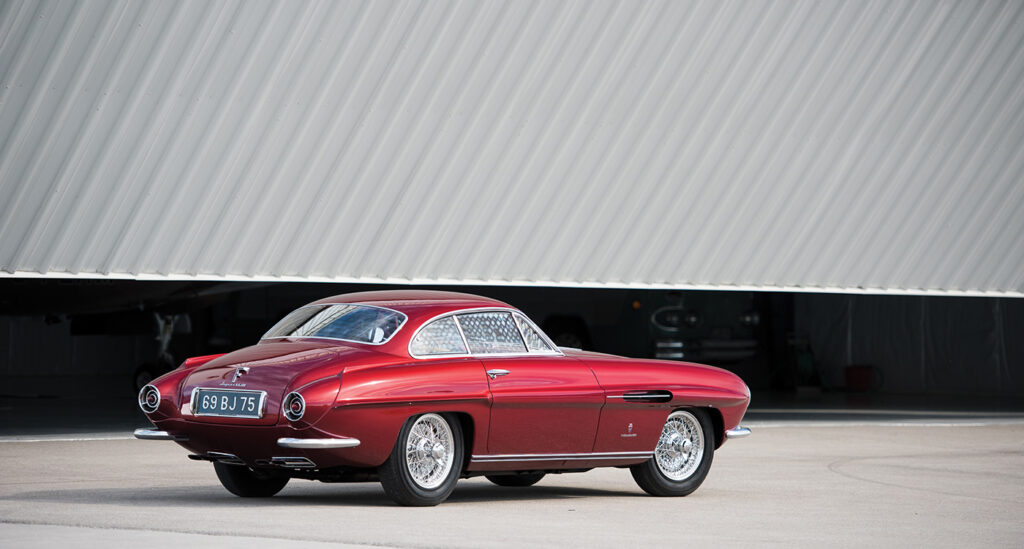
There’s information only about two XK120 Supersonics.
Aston Martin DB2/4 Mark II
The DB2/4 Supersonic was exhibited for the first time at the 1956 Turin Motor Show. It is the last vehicle made in this design. Aston Martin and Ghia give no specific information about the construction initiative. It seems that the car was made on private request. Nevertheless, Ghia officially exhibited it in 1956. It is assumed that the race driver Harry Schell ordered it;because he was first seen with the vehicle in 1956.
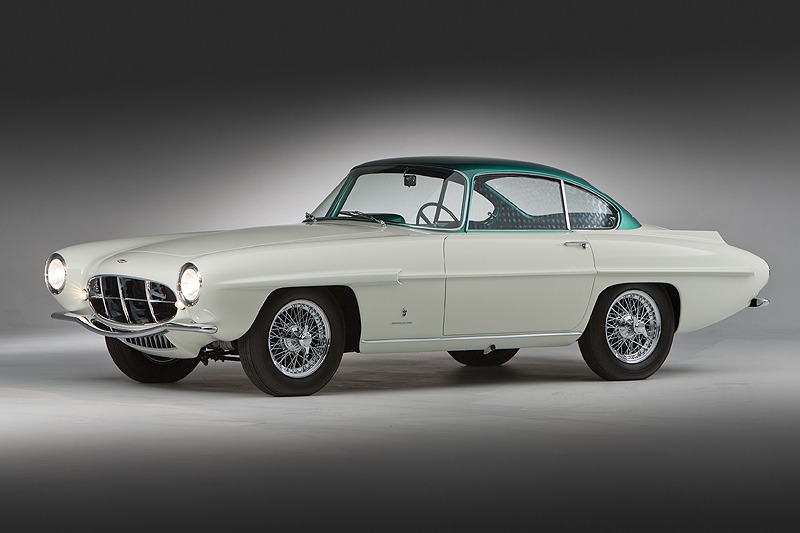
He used the car to drive to the racetracks at that time where he worked as a driver for Vanwall. Since the DB2/4 has a 2+2-seat layout, the Supersonic body had to be changed accordingly. A closer look at the side surfaces shows stylistic differences compared to the Fiat and Jaguar Supersonics.
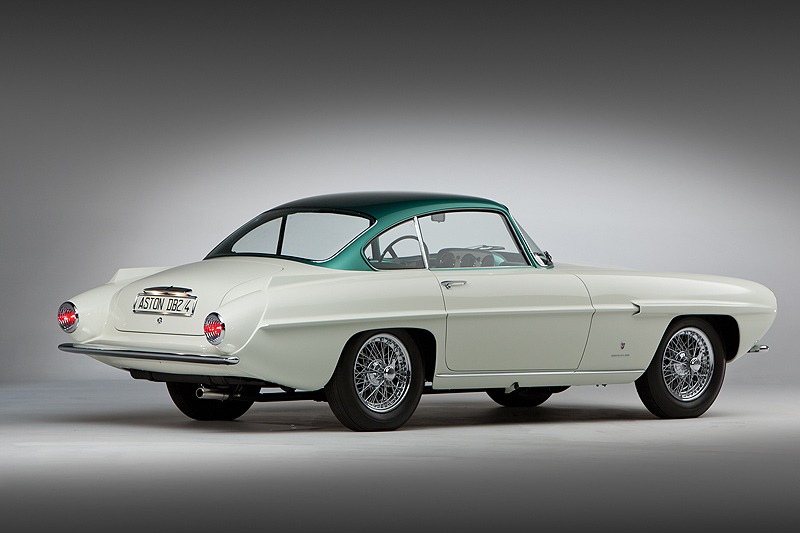
In 2013, the Aston Martin DB2/4 Mark II Supersonic with chassis number AM300/1/1132 was auctioned off for $2,310,000 at RM Sotheby’s auction Art of the Automobile.
DeSoto Adventurer II
In early 1954, a Supersonic on a Fiat chassis was imported to Chrysler into the United States. Virgil Exner, chief designer, used the vehicle as a base and developed a design for the Chrysler S-19 chassis. Then, everything was shipped to Ghia in Italy and where the designed body was built. Upon completion, everything was returned to the US and the car was presented as DeSoto Adventurer II on June 16, 1954, at the opening of Chrysler’s Chelsea Proving Grounds.
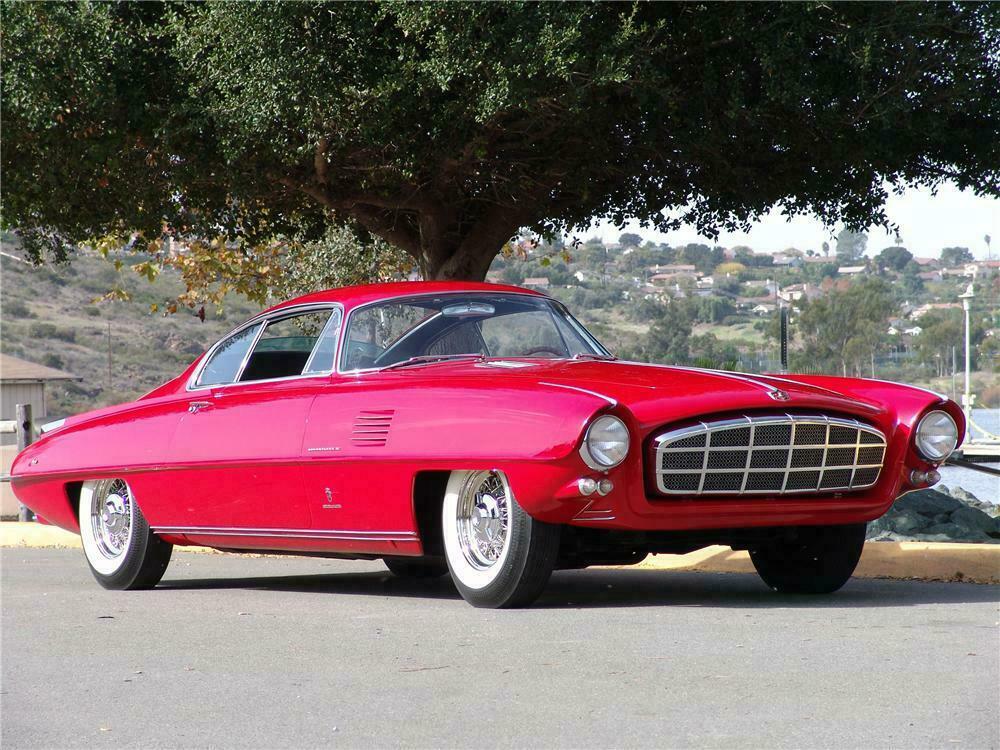
After this premiere, the car was returned to Italy and Ghia exhibited it in Turin and Brussels in 1954. The S-19 chassis was equipped with a DeSoto Red Ram HEMI V8 engine and a two-stage Powerflite automatic. The body, designed by Exner was built by Ghia resembled the supersonic design in the broadest sense. Since the vehicle is much larger than the rest of the Supersonics, the shape had to be adjusted accordingly. It features an Italian style interior. Despite its size, the Adventurer II is only a two-seater. A special feature is the retractable rear window.
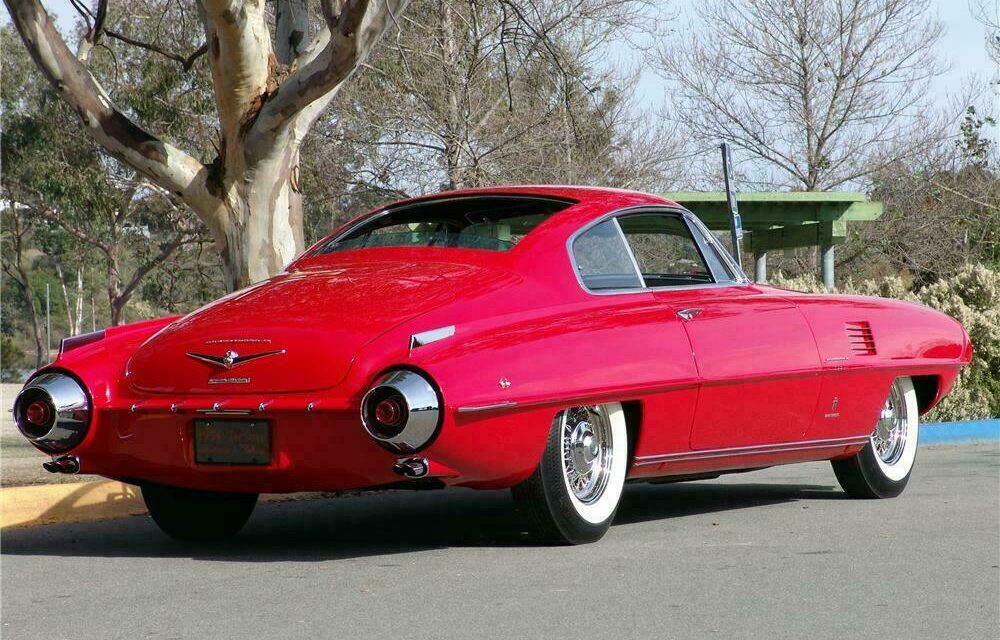
In 2012, the DeSoto Adventurer II with the chassis number 14093762 was auctioned off in Scottsdale at an auction held by Barrett-Jackson for $1,430,000.


